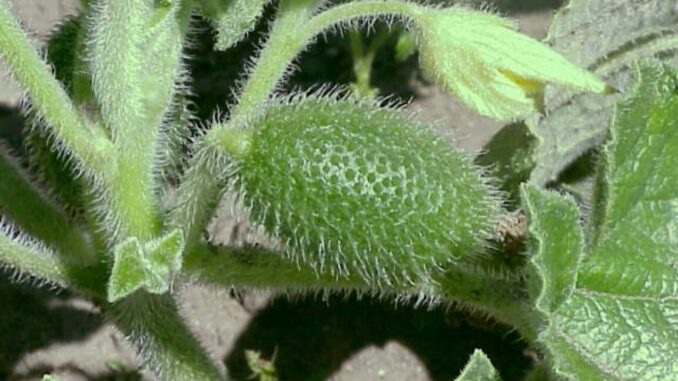
Take a look at squirting cucumber explosive seed dispersal in real time and slowed down. Credit: Helen Gorges/CC BY-NC-ND
Take a look at squirting cucumber explosive seed dispersal in real time and slowed down. Credit: Helen Gorges/CC BY-NC-ND
One doesn’t normally associate ballistics with botany, but most of us don’t study “squirting” cucumbers—so called because they disperse their seeds by explosively propelling them out into the world. Scientists took a series of high-speed videos, both in the wild and in the lab, to learn more about the underlying biomechanics of this plant’s method of seed dispersal. Graduate student Helen Gorges of Kiel University’s Zoological Institute in Germany presented the findings at the Society for Experimental Biology Annual Conference in Antwerp, Belgium.
Also known as the “noli me tangere,” aka “touch me not,” the squirting cucumber (Ecballium elaterium) is often considered a weed, or invasive species, although in some regions it’s viewed as ornamental. Fun fact: The fruit extract is a powerful laxative. If swallowed or inhaled through the nose, it can be poisonous, causing edemas and necrosis of the nasal mucosa, among other complications. That same fruit, once ripened, can squirt out a stream of mucus-like liquid containing seed pods at high speeds—an example of rapid plant movement.
As glucosides in the sap of the fruit’s tissue cells build up, so does the internal pressure, eventually causing the fruit to detach from the stalk. At that point, the pericarp contracts, and both the fruit and the seeds are violently expelled through the resulting hole. The squirting action is further aided by structural changes in the fruit as it dehydrates and its cells coil, bend, or twist in response (hygroscopic movement).
Squirting cucumber explosive seed dispersal (over 300x slowed down). Credit: Helen Gorges/CC BY-NC-ND
Squirting cucumber explosive seed dispersal (over 300x slowed down). Credit: Helen Gorges/CC BY-NC-ND
It’s actually not the most effective means of seed dispersal, per a 2019 study. That’s good news for almond orchards, for example, since farmers can target their weed killing efforts to the most likely affected areas. And the plant tissue tends to fracture from the force of the ballistic seed dispersal. “Many factors have to interact perfectly to disperse the seeds in the most efficient way, while not destroying the whole plant too early,” said Gorges, who wanted to learn more about the biomechanics that control the fruit as it ripens and prepares for seed dispersion.





Be the first to comment